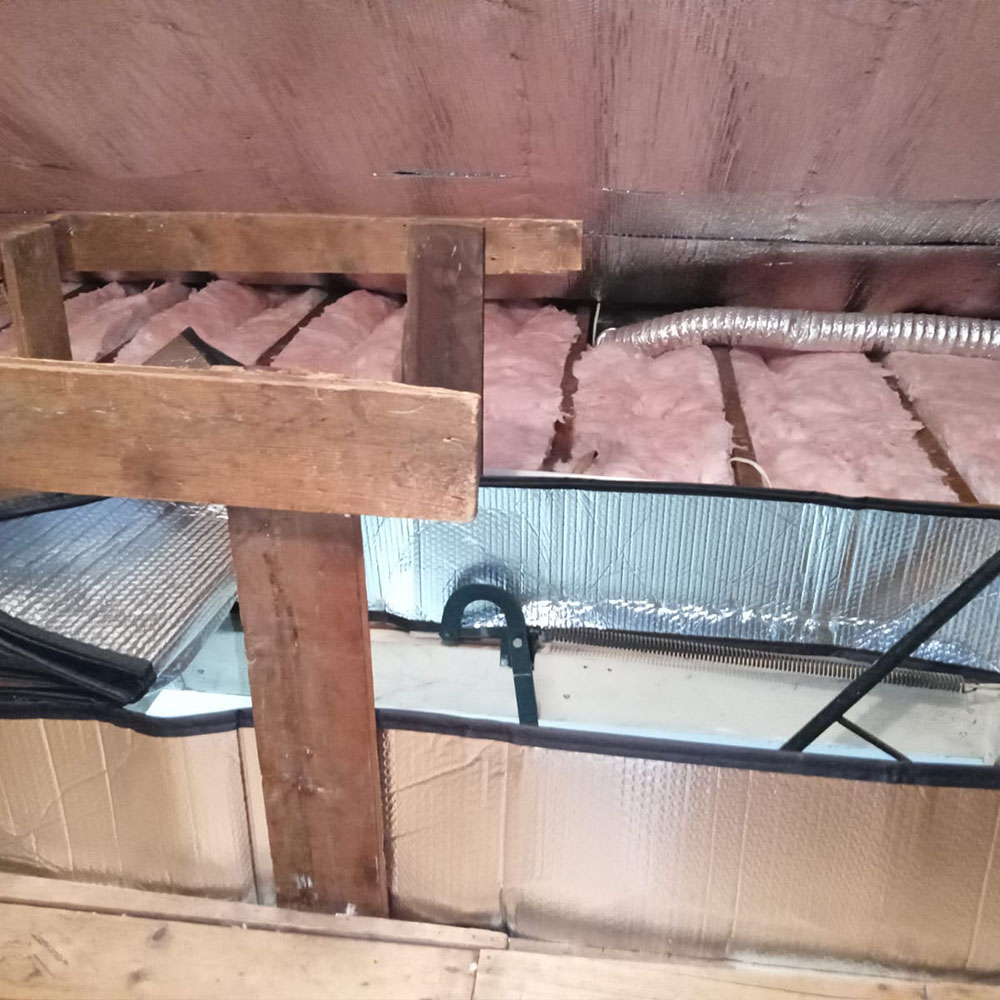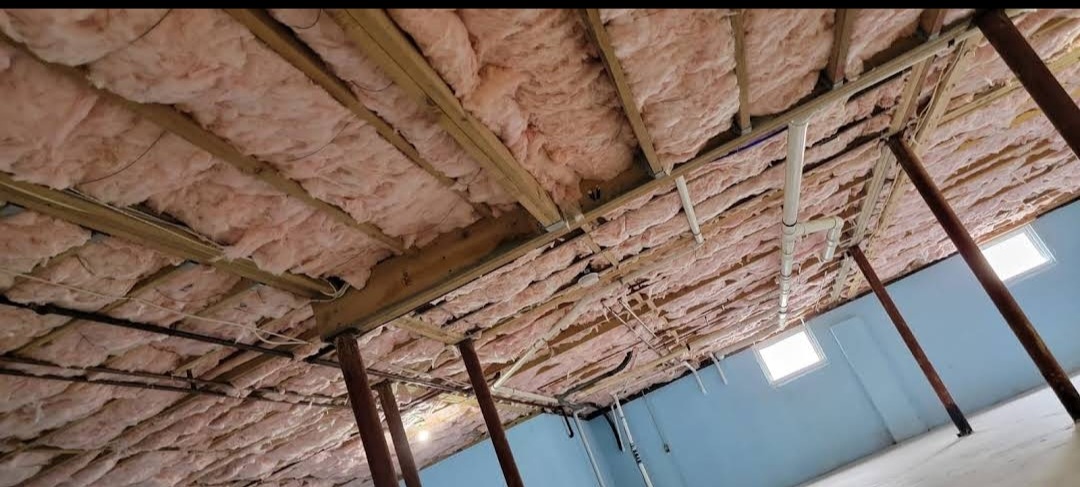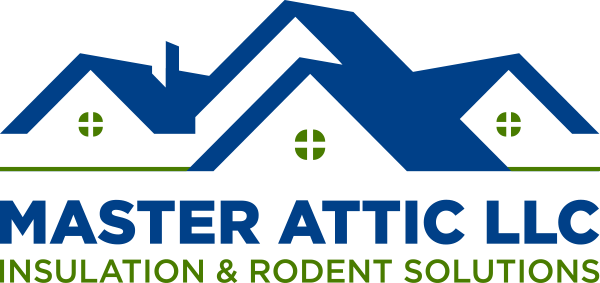
What is a Radiant Barrier?
What is a Radiant Barrier? You may have encountered radiant barriers if you’ve been searching for ways to increase energy efficiency in your attic space.
Every homeowner will tell you they don’t enjoy living in a cold house and shouldn’t have to. If your home has efficient heating, it should stay warm for at least a few hours, even after turning it off. However, if you notice the temperature dropping soon after your heat is off, you most likely have a problem with your attic insulation.
Having efficient attic insulation can solve this problem. Since heat rises, any warmth in your home from your heating system will rise to your attic. If your attic is not well-insulated, your heat is escaping and most likely driving up your energy costs.
As you continue reading, we’ll discuss more in-depth the five common types of attic insulation and what to consider when choosing the best attic insulation that is right for you.

Below are the five common types of attic insulation.
One type of insulation is blown-in cellulose. Blown-in cellulose insulation uses the same distribution method as fiberglass insulation, but the material differs. This type of attic insulation involves using cellulose.
Cellulose is composed of recycled materials such as newspapers, cardboard, or wood-based materials. Afterward, the cellulose is then blown-in, just like blown-in fiberglass insulation. Professionals install blown-in cellulose insulation to fill gaps, keep heat inside your home, and prevent cold air from entering.
Cellulose manufacturers have made many false claims to make it a less preferred option for attic insulation. Cellulose also can settle in and shape any area, which can cause insulation problems. As the insulation settles, gaps will reduce its effectiveness.
For example, Cellulose vs. Fiberglass’s lifespan is half the life span. Generally, cellulose will last 10-15 years before drastically shrinking in R-Value, smelling like old carpet, and getting damaged by leaks or rodents.
Blown-in cellulose insulation also soaks up moisture in insulated areas and will take a long time to dry out. When moisture is soaked up, this can lead to mold and mildew problems. When you have wet insulation, this will lead to a lower R-Value.
Spray foam is another type of insulation for your attic space. Spray foam insulation comes in open-cell and closed-cell.
One downside to spray foam insulation is that it’s hard to remove once it hardens on the roof and typically recommended by professionals along with a new roof. This way, they will both expire around the same time, which also means more cost if you have to do both around the same time. Aside from that, spray foam insulation can become expensive and is mainly used in commercial buildings or areas with vaulted ceilings.
During installation, spray foam insulation can become high maintenance and challenging to install correctly, with little room for error between installation and preparation of spray foam chemicals. Professionals consider spray foam insulation one of the best insulation options for homes.
Fiberglass Batt insulation is the most frequently installed insulation and is often what most homeowners are familiar with. Fiberglass insulation has glass fibers that are made up of recycled materials. The most common form of fiberglass insulation is Batt.
Batt insulation is made up of large, rolled-up sheets that are held together by a vapor barrier. Here are some of the advantages of having fiberglass batt insulation.
Fiberglass Batt Insulation has been one of the supreme, top-selling attic insulation used in 90% of homes. With its long list of advantages, it’s one of the top recommended among professionals, is budget-friendly, and can shave money off your utility bill!
Blown-in insulation uses the same type of material as fiberglass insulation but differs in its distribution method. Rather than coming in large rolls, blown-in insulation requires its fiberglass to be blown into your attic. Installing this type of insulation is typically done with a machine to cover your attic space.
When it comes to insulation, blown-in insulation is one of the best options for your home. It’s budget-friendly, reliable, and, most importantly, can be trusted when unexpected temperatures and weather approach. In addition, blown-in insulation has fire-resistant capabilities.
Once you’ve determined which attic insulation suits your home, finding the proper attic insulation isn’t tricky. However, there are some other factors you’ll want to consider, such as its material and R-Value.
To assist homeowners in finding the best insulation, manufacturers and other professionals refer to an insulation’s “R-Value” in terms of effectiveness. R-value is the measurement of the resistance to the flow of heat insulation. The higher R-value, the more effective the insulation is and the more it will help reduce energy costs.
Radiant foil, however, isn’t measured by its R-value because it functions to reflect heat instead of reducing heat transmission. To learn more about your region’s recommended R-value, you can visit Energystar.gov.
You’ll find that attic insulation uses various materials. Some of those materials are:
With over twenty years of experience, Master Attic has provided efficient and safe services to the New Jersey and Eastern Pennsylvania areas. As a leading brand in the industry, our top priority is to put customer care at the frontline of our work.
Our licensed technicians use professional and top-grade materials to ensure you receive long-lasting, effective, and safe solutions for years of comfort. When we discuss your attic insulation needs, we will ensure we meet your needs and budget without sacrificing the integrity of the product.
Most importantly, our licensed technicians are trained within our company directly. Our team has remediated thousands of attic spaces throughout New Jersey and Eastern Pennsylvania, building a fantastic reputation with homeowners. If you’ve been contemplating installing new attic insulation, call us today.
If you have any questions or concerns, Contact Master Attic today for a free estimate for new attic insulation.

What is a Radiant Barrier? You may have encountered radiant barriers if you’ve been searching for ways to increase energy efficiency in your attic space.

How Often Should You Clean Up Your Attic? Attic cleaning is anything but a good time, but mold, dust, and other allergens can nest in

How to Trap a Raccoon in the Attic When you have raccoons living in your attic, they can quickly become a nuisance and create various

We strive endlessly to provide a service like no other; quality, safety and comfort is our #1 priority for your family.
Fully Licensed and Insured
NJ # 13VH09509100
PA # 147980
Look out for a confirmation email!
A Master Attic Pro Will Reach Out To You Shortly
